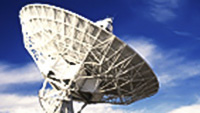Search and order online
Firefoxes and whale spouts light up Earth's shield
- Video Online only
- Title Firefoxes and whale spouts light up Earth's shield
- Released: 20/09/2023
- Length 00:00:56
- Language English
- Footage Type Close-up
- Copyright All-sky camera, Kiruna Atmospheric and Geophysical Observatory (KAGO) within the Swedish Institute of Space Physics (IRF). Data provided as part of ESA’s Space Weather Service Network.
- Description
Did you know, the Northern lights or Aurora Borealis are created when the mythical Finnish ‘Firefox’ runs so quickly across the snow that its tail causes sparks to fly into the night sky? At least, that’s one of the stories that has been told in Finland about this beautiful phenomenon. Another that we love comes from the Sámi people of Finnish Lapland (among others), who describe them as plumes of water ejected by whales.
What do they look like, to you?
Today’s scientific explanation for the origin of the Aurora wasn’t thought up until the 20th Century, by the Norwegian scientist Kristian Birkeland. Charged particles, electrons and protons, are constantly emitted by the Sun, making up the solar wind. This wind slams into Earth’s ionosphere – sometimes sped up to vast speeds by solar storms – and the charged particles are deflected towards the poles by the magnetosphere.
Molecules in our atmosphere then absorb energy from these charged particles from the Sun, and re-release it in their own unique set of colours. Oxygen produces green, but at high altitudes can create red, nitrogen creates blues, and colours can overlap creating purple. Waves, twists and streams are caused by variations in Earth’s magnetic fields.
This striking video shows the Aurora over Kiruna, the northernmost city in Sweden. It’s composed of images taken by the Kiruna all-sky camera every minute for about ten hours over 18-19 September 2023.
The all-sky auroral camera is operated by the Kiruna Atmospheric and Geophysical Observatory (KAGO) within the Swedish Institute of Space Physics (IRF), and data from here is provided as part of ESA’s network of space weather services within the Agency’s Space Safety Programme.
Recently, a sequence of multiple coronal mass ejections – large, sudden ejections of plasma and magnetic field from the Sun – struck Earth and we are still recovering from the passage of the last one. The fastest was travelling at around 700 km/s, considered a small event.
The Sun is getting close to its time of peak solar activity – predicted for 2024/2025 – in its current 11-year cycle, Solar Cycle 25. Solar storms are causing an increase in geomagnetic activity; temporary disturbances in Earth’s magnetosphere, which has led to increased light shows at Earth’s poles.
A modern interpretation of the meaning of the Aurora could focus on Earth’s remarkable way of protecting life, so far, the only life we know of in the Universe. The colours of the Aurora reveal the normally invisible complex molecular soup in just the right composition for life to thrive. Those molecules form our atmosphere, a thin shield against electromagnetic radiation and even the small asteroids that constantly bombard our home.
The shapes of the Aurora tell the story of the usually invisible protective magnetic field, holding back dangerous elements from reaching us on the ground, like charged particles from the Sun. It also pulls every compass needle north, helping us navigate stormy seas.
While humans on Earth are protected by Earth’s magnetic field, space weather can have an extreme and disruptive impact on satellites in orbit and infrastructure on Earth, and ultimately our society. For this reason, ESA’s Space Weather Service Network continues to monitor our star and the conditions around Earth, to provide information to keep our systems safe.
In 2030, ESA will launch the first-of-its-kind Vigil mission to monitor the Sun from a unique vantage point. Studying our star from the side, it will provide a stream of data that will warn of potentially hazardous regions before they roll into view from Earth.
Find out more about space weather and sign up for free updates from ESA’s Space Weather Service Network.


